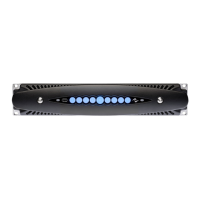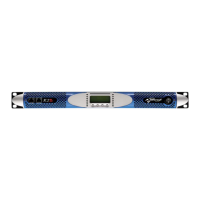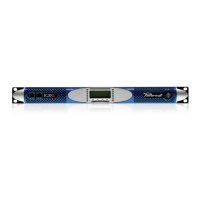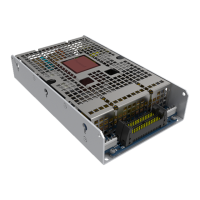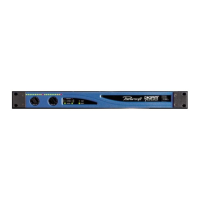English
Armonía
Pro Audio Suite
Armonía Pro Audio Suite is the default conguring
interface that allows system setting and customization of
the Quattrocanali DSP+D ampliers.
Armonía can be installed on a PC running Windows
(XPSP3 and higher). Freely download Armonía Pro Audio
Suite from the Armonía forum:
http://www.powersoft-audio.com/en/armonia-forum
Quattrocanali DSP+D ampliers can connect to the
PC running Armonía through a Fast Ethernet connection.
In order to start remote operation the device must be
discovered and imported into the Armonía Workspace. Click
on the Discover button in the Remote entities window, or
select it from the Model list and drag it into the Armonía
Workspace.
The callback button (see Panel C, p. 5) allows you
to highlight the presence of the amplier into the Armonía
Workspace.
Once connected to Armonía Pro Audio Suite a double
click on the amplier icon in the Workspace will open the
amplier dashboard. Here it is possible to access and
congure all the features of the Quattrocanali DSP+D.
8
8 : 1.Signal routing and DSP architecture
Signal processing on Powersoft Quattrocanali DSP+D
ampliers accomplishes multiple functions that affect
the audio signal before power amplication; the main
adjustments include gain, polarity, delay, limiting and signal
equalization; some processing are related only to particular
stages, such as limiting and damping control that are
implemented on the output section only, or input priority
assignment available in the input section.
The processing architecture is composed of six sections:
Input source selection. The input section allows you
to manage input gain and delay of analog and digital
sources, in order to compensate transmission latency
and levels. Furthermore the Quattrocanali DSP+D
implement a backup policy aimed to improve reliability
against signal fault.
Matrix. The innovative routing engine of Quattrocanali
DSP+D allows any input to be routed to any output. The
Matrix implements a non-boolean rooting architecture
allowing free channel assignment and level adjustment.
Advanced processing. This allows you to optimize
levels and shape the sound of the input signals. Gain
and polarity adjustment, asymmetric raised-cosine full
parametric lters, delay and mute are available on each
channel routed to the speaker section.
Speaker equalization. Designed to manage the
conguration presets for multi-way systems, it
implements FIR and IIR full parametric lters.
Speaker routing. Once properly grouped, the output
channels are presented to the matrix as speakers –
asingle row representing a speaker (actually group of
ways) – allowing a high grade of granularity in signal
processing.
Output processing. This allows ne tuning of output
signals, aiming to optimize the power delivered and the
performance of the single way out. It provides gain and
polarity adjustment, IIR and FIR full parametric lters,
delay, mute, limiting and damping control on each
output channel.
8 : 2.Purposed workflow
Once the loudspeaker layout has been dened, we
suggest a bottom-up conguration procedure that starts
from the conguration of the transducers layout and goes
up toward the input selection and the denition of the
backup policy.
Shortly, the main steps to follow are:
1. Set Lo-Z and Hi-Z loads and lters on output channels.
2. Load the loudspeaker presets or manually congure the
loudspeaker layout (grouping output channels, limiting,
speaker processing, etc.).
3. Dene the routing path and the levels of the signals
from the input channels to the active output channels
(matrix).
4. Select the signal source from the input connections and
dene the backup policy (input source selection).
5. Dene GPO assignment and alarms thresholds.
Through Armonía Pro Audio Suite software it is possible
to set the thresholds on the load impedance, at given
frequency, that trigger the general purpose output of any
channel in Quattrocanali DSP+D ampliers (see FIG. 5).
FIG. 11: GPO: System monitoring interface.
8 : 3.Live Impedance
FIG. 10: Armonía Pro Audio Suite.
18 | Quattrocanali Series

